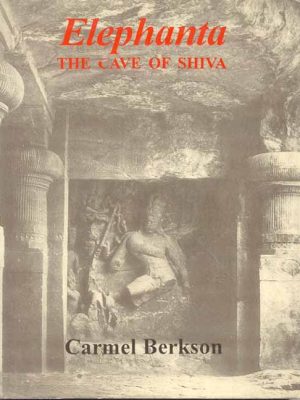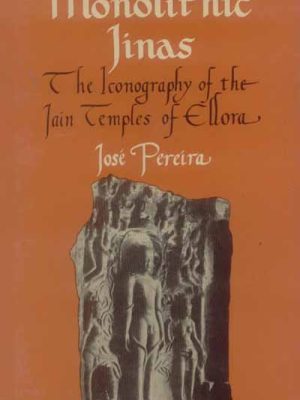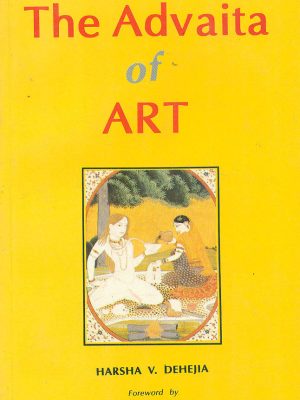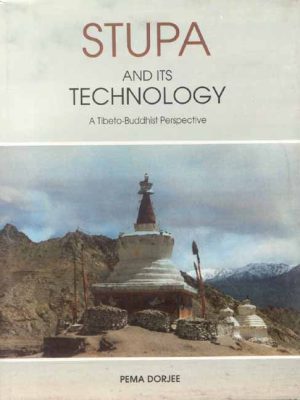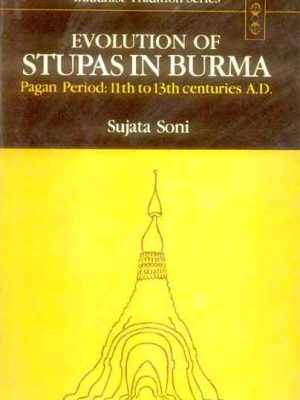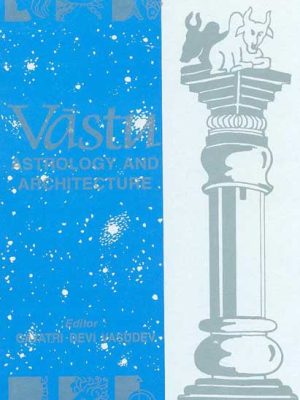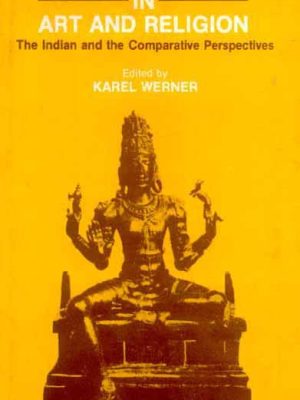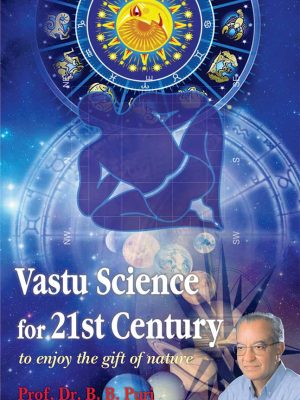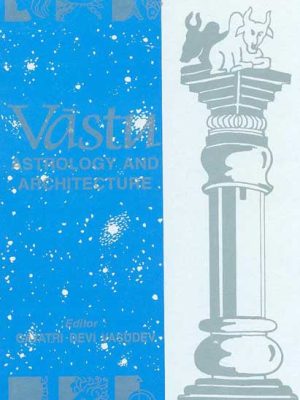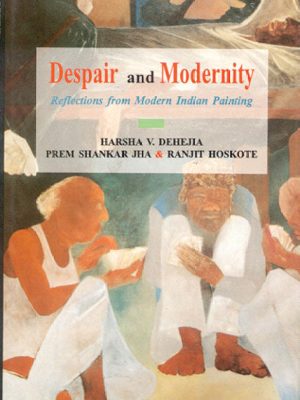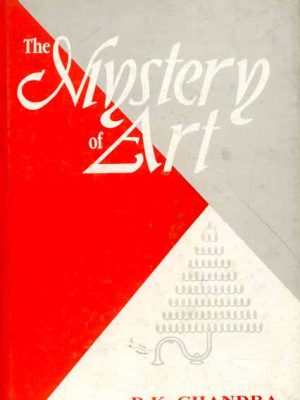Art, Architecture, Antiquities
-
Elephanta: The Cave of Shiva
Elephanta: The Cave of Shiva
Three descriptive essays and numerous fascinating photographs, taken
especially for this volume, allow the reader to experience a major monument
of Indian art: the sixth century temple cave on Elephanta Island, in Bombay
harbor, and its extraordinary stone sculptures. The authors and the
photographer capture the atmosphere of the cave and the spirit of the
sculptures, which portray the relentless energy and paradoxical power of
Shiva, greatest of all Hindu gods. The photographs are particularly
successful in revealing the dramatic alternation of light and dark that is
so much a part of the beauty of the cave’s interior. Ms. Berkson’s trained
and loving eye picks out the subtleties of the main sculptures and humorous
details that the visitor might miss even on the site.
In the text Wendy O’Flaherty interprets the myths of Shiva depicted in the
sculpture; Ms. berkson’s essay supplies historical background and a
stylistic analysis; and George Michell examines the overall structure of
the cave to show that it is a mandala-like image of the heavenly mountain
residence of Shiva and even of the structure of the universe itself.
“The author as well as the publishers of the work deserve to be
congratulated for providing this easily accessible guide to Elephanta.”
Research Bulletin Vishveshvaranand
Vedic Research Institute,Vol.I, Dec.2002
₹695.00Elephanta: The Cave of Shiva
₹695.00 -
Monolithic Jinas: The Iconography of the Jain Temples of Ellora
Monolithic Jinas: The Iconography of the Jain Temples of Ellora
Monolithic Jinas: The Iconography of the Jain Temples of Ellora
About the Author(s)
CARMEL BERKSON
₹600.00 -
The Advaita of Art
The Advaita of Art
This inquiry is an undertaking to demonstrate that aesthetic experience in the classical Indian tradition, on its own merit, without being subordinated to rituals and practices commonly held under the rubric of religion, is capable of providing a transcendent experience to a prepared aesthete. Dr. Dehejia examines the dynamics of two aesthetics processes, that stemming from aesthetic emotion or rasa and from aesthetic form or rupa, and cogently underpins them within the advaitic epistemology of Kasmir Saivism. The Advaita of Art, Dr. Dehejia argues, is a joyous celebration of affirmation and assertion and not negation.
₹395.00 – ₹595.00The Advaita of Art
₹395.00 – ₹595.00 -
Stupa and Its Technology: A Tibeto-Buddhist Perspective
Stupa and Its Technology: A Tibeto-Buddhist Perspective
Among all the religious monuments of the world, the stupa has the longest
uninterrupted historical development. Though modelled after the Indian
prototype, the stupa architecture was developed in all the countries where
Buddhism had flourished. Over time, the structural shape of the stupa
underwent significant modifications in India and the other Asian Buddhist
countries.
The present study shows how Tibet became a treasure house of Buddhist
culture and literature–highlighting important texts dealing with stupa
architecture. Various ritual activities associated with the construction of
the stupa are described along with the eight fundamental types of
Tibeto-Buddhist stupas and their main structural components. A survey of
the stupas found in the upper Indus Valley in the Leh region of Ladakh
shows their similarity to the Tibeto-Buddhist tradition. The value of the
book is enhanced by an appendix with English translation of four important
Tibetan texts preceded by transliteration.
This monograph is the first in the new sub-series of the IGNCA on the
Buddhist stupas, which would not be restricted to India alone. It is hoped
that such studies will enable the art-historians and archaeologists to
understand this important structural form in totality in relation to its
wide geographical spread and the distinctive features of particular
developments in different countries.
₹595.00 -
Evolution of Stupas in Burma: Pagan Period: 11th to 13th Centuries A.D.)
Evolution of Stupas in Burma: Pagan Period: 11th to 13th Centuries A.D.)
This work is the outcome of painstaking research on the evolution of stupas in Burma, Pagan Period, 11th to 13th centuries a.d. Burma known as the land of pagodas is nowhere so rich in the number of pagodas as in Pagan. The stupendous vastness of the ruins reminiscent of the glory that was of Pagan
in its heyday inspired this study. The evolution traced back to the beginning of the stupa structure in India, deals with the various architectural phases (duly illustrated) it passed through ending with the final stage in the Rhwedagum Pagoda in Rangoon (Burma). Apart from the material side of the study, there is the need of looking into the aesthetic and spiritual side of the evolution. That religious architecture is a barometer of the material prosperity and social outlook of the people,
besides being the handmaid of the spiritual aspirations of the devotees, is amply discernible in this study.
The value of the art survey in this work is further enhanced by the inclusion of over 138 photographs. Moreover, besides the magnificent Pagan art, it gives a comparative view of the religious architectual development in the Asian countries contemporaneous with the Pagan Period.
₹595.00 -
Vastu: Astrology and Architecture: (Papers presented at the First All India Symposium on Vastu, bangalore, held on June 3-4, 1995)
Vastu: Astrology and Architecture: (Papers presented at the First All India Symposium on Vastu, bangalore, held on June 3-4, 1995)
Vastu Sastra an important limb of Jyotisa or astrology is an ancient science and study of architecture and engineering.
The present volume is an outcome of a symposium on Vastu. One of the goals of the symposium was to revive the lost glory of Vastu and show its relevance to modern times. The book covers different aspects of construction from planning to execution. It underline the role of Jyotisa astrology in Vastu principles.
The book will stimulate greater interest in ancient Vastu principles amongst modern architects and enginers and present them a new perspective which will raise their creativity to new untouched heights.
The book has been divided into three broad sections covering different aspects of Vastu Silpa-I. Vastu and its Relevance to Modern Times; II. Vastu and Jyotisa; and III. Vastu and Temple Architecture comprising thirty-three articles in all. Their contributors represent a range of viewpoints on Vastu principles. All write with intelligence and insight keeping in view its relevance with modern times needs of architecture and engineering.
₹545.00 -
Symbols in Art and Religion: The Indian and the Comparative Perspective
Symbols in Art and Religion: The Indian and the Comparative Perspective
Symbols in Art and Religion: The Indian and the Comparative Perspective
About the Author(s)
KAREL WERNER
₹545.00 -
Vastu Science For 21st Century: To Enjoy the Gift of Nature
Vastu Science For 21st Century: To Enjoy the Gift of Nature
Vastu Shastra is not merely an art but a definite science in itself. This book has made an excellent effort to establish this fact. The book attempts to highlight the principles of Vastu science and its application in designing of built enviroment to enhance the quality of life. This science
is still relevant and effective in the modern life changing styles of Architecture with universal application of its principles. The author has tried to justify that Vastu principles are much in need in the 21st century in view of rapid advancements man is making in other fields without compensating on ecology front, which forms the basis of Vastu. In the end an attempt has been made to give a compound solution to the problem of Vastu-based planning.
₹525.00 -
Vastu: Astrology and Architecture: (Papers presented at the First All India Symposium on Vastu, bangalore, held on June 3-4, 1995)
Vastu: Astrology and Architecture: (Papers presented at the First All India Symposium on Vastu, bangalore, held on June 3-4, 1995)
Vastu Sastra an important limb of Jyotisa or astrology is an ancient science and study of architecture and engineering.
The present volume is an outcome of a symposium on Vastu. One of the goals of the symposium was to revive the lost glory of Vastu and show its relevance to modern times. The book covers different aspects of construction from planning to execution. It underline the role of Jyotisa astrology in Vastu principles.
The book will stimulate greater interest in ancient Vastu principles amongst modern architects and enginers and present them a new perspective which will raise their creativity to new untouched heights.
The book has been divided into three broad sections covering different aspects of Vastu Silpa-I. Vastu and its Relevance to Modern Times; II. Vastu and Jyotisa; and III. Vastu and Temple Architecture comprising thirty-three articles in all. Their contributors represent a range of viewpoints on Vastu principles. All write with intelligence and insight keeping in view its relevance with modern times needs of architecture and engineering.
₹495.00 -
Despair and Modernity: Reflections from Modern Indian Painting
Despair and Modernity: Reflections from Modern Indian Painting
Dehejia has tried to create a place within the main frame of culture and philosophy of Indian art for a legitimate analytic theory called despair. Dehejia’s effort creates a space for the modern within Indian classicism by negotiating the philosophy of despair in classical terms. As a result the basic schism that has grown in recent years between the philosophy and history of modern art on the one hand and the philosophy and history of traditional arts is today cloder to being breached
₹295.00 -
The Mystery of Art
The Mystery of Art
The Mystery of Art lets the forms of art tell their own tale. Instead of analyzing the art expressions this narrative work invites the reader to re-discover the functions of art. The observation of the art-scenes starts with the present and winds its way backward through time and history. In the course of this journey the different art-expressions reveal themselves in a novel light.
About the Author(s)
D K Chandra
₹295.00The Mystery of Art
₹295.00 -
Sthapatya Ved-Vastu Sastra
Sthapatya Ved-Vastu Sastra
Sthapatya Veda embraces the concept of the holistic origin of the universe. It expounds the rinciples involved in the areas of Vastushastra (architecture and planning), Shilpashastra (sculpture and iconography), Chitrakala (painting in all branches). It envelops within it, the knowledge of Jyotis, Ayur-Veda and Gandharva Veda etc. and tenets of Samudhrika Shastra and other branches of Vedic knowledge.
₹250.00Sthapatya Ved-Vastu Sastra
₹250.00 -
Ram Gilhari Bookmark
Printed Bookmark Of 3*9 inches. Laminated Bookmark for your Large size Spiritual Books. Bookmark with longer life and waterproof quality.
₹100.00Ram Gilhari Bookmark
₹100.00

